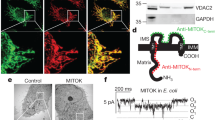Abstract
There is considerable evidence that opening the mitochondrial ATP-sensitive potassium channel (mitoKATP) is cardioprotective in ischemia-reperfusion. Two prominent questions surround the role of mitoKATP in the cardiomyocyte: How does opening mitoKATP protect? What is the normal physiological role of mitoKATP in the heart? Before these questions can be addressed, it is necessary to agree on the bioenergetic consequences of opening mitoKATP, and this distills down to a single question – does opening mitoKATP cause significant uncoupling or not? The evidence strongly indicates that it does not and that reports of uncoupling and inhibition of Ca2+ uptake are the result of using toxic concentrations of KATP channel openers. Thus, opening mitoKATP results in increased K+ flux that is sufficient to change mitochondrial volume but is insufficient to cause significant depolarization of membrane potential. The volume changes, however, have significant bioenergetic consequences for energy coupling in the cell.
Similar content being viewed by others
Author information
Authors and Affiliations
Rights and permissions
About this article
Cite this article
Garlid, K. Opening mitochondrial KATP in the heart – what happens, and what does not happen. Basic Res Cardiol 95, 275–279 (2000). https://doi.org/10.1007/s003950070046
Issue Date:
DOI: https://doi.org/10.1007/s003950070046




